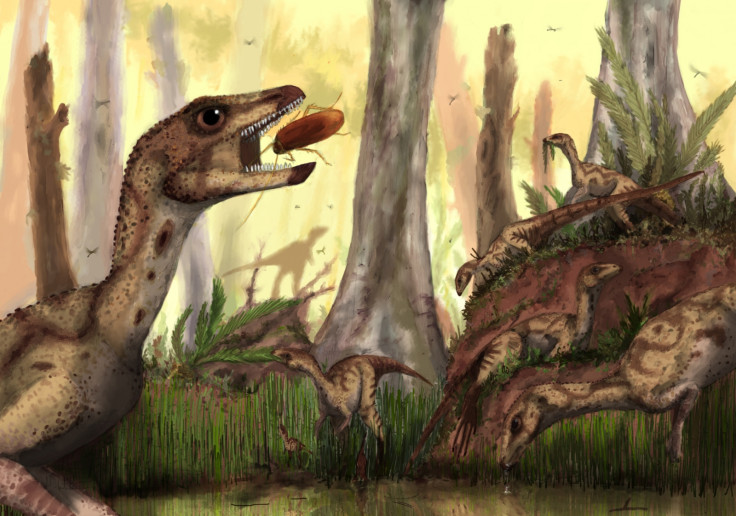Laquintasaura Venezuelae: Bird-Hipped Dinosaur is First to Be Discovered in Venezuela

A new dinosaur species has been discovered in Venezuela – the first ever to have been found in the South American country.
Laquintasaura venezuelae was a dog-sized 'bird-hipped' dinosaur that lived shortly after the major extinction at the end of the Triassic Period, 201 million years ago.
Identified by scientists at the Natural History Museum in London and the University of Zürich, bones from four L. venezuelae were found together in the La Quinta Formation in Venezuela.
The creatures found ranged from 3 to 12 years old. Scientists believe they lived in small groups, making it the earliest example of social behaviour among ornithischians, or bird-hipped dinosaurs, which includes species like the stegosaurus and iguanodon.
Marcelo Sánchez-Villagra, co-author and palaeontologist at University of Zürich, said the known history of bird-hipped dinosaurs has many gaps as few specimens have been found: "This early species plays a key role in our understanding of the evolution, not only of this group, but of dinosaurs in general."
Published in the journal Proceedings of the Royal Society B, the researchers say it walked on two hind legs and measured about one metre in length and 25cm at the hip. It was largely fed on ferns, but could also have eaten insects and other small creatures.
Paul Barrett, lead author and palaeontologist at the Natural History Museum, said: 'It's always exciting to discover a new dinosaur species but there are many surprising firsts with laquintasaura. Not only does it expand the distribution of early dinosaurs, its age makes it important for understanding their early evolution and behaviour.
"Laquintasaura lived very soon after the major extinction at the end of the Triassic Period, 201 million years ago, showing dinosaurs bounced back quickly after this event. It is fascinating and unexpected to see they lived in herds, something we have little evidence of so far in dinosaurs from this time.
"The fact that it is from completely new and early taxon means we can fill some of the gaps in our understanding of when different groups of dinosaurs evolved."
© Copyright IBTimes 2025. All rights reserved.






















